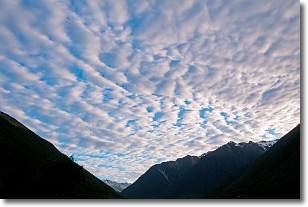Weather Alert in New Mexico
Fire Weather Watch issued May 12 at 4:35AM MDT until May 14 at 9:00PM MDT by NWS Albuquerque NM
AREAS AFFECTED: Middle Rio Grande Valley; West Central Basin and Range; Sandia and Manzano Mountains
DESCRIPTION: ...RED FLAG WARNING TODAY FROM 3 TO 8 PM FOR THE WEST CENTRAL MOUNTAINS ALONG AND WEST OF THE CONTINENTAL DIVIDE DUE TO STRONG WIND AND LOW HUMIDITY... ...FIRE WEATHER WATCH TUESDAY AND WEDNESDAY FROM 11 AM TO 9 PM FOR THE WEST CENTRAL MOUNTAINS, BASIN, AND RANGE, MIDDLE RIO GRANDE VALLEY, AND THE SANDIA AND MANZANO MOUNTAINS ALONG AND SOUTH OF HIGHWAY 60 DUE TO STRONG WIND AND LOW HUMIDITY... .Wind speeds will become strong west of the continental divide this afternoon, then become strong areawide Tuesday and Wednesday, as an upper level trough draws the jetstream over New Mexico with strong and very dry southwest winds at the surface. A gusty Pacific cold front will cross on Wednesday shifting the wind direction out of the west, then out of the northwest late in the day. After a high temperature around 8 degrees above the 30-year average in Gallup today, highs will vary from near average to around 10 degrees above across the Watch area on Tuesday, then from 3 degrees above average in Socorro County on Wednesday to around 8 degrees below average along the Arizona border. Wind speeds will also weaken some on Wednesday, but most locations will still experience single digit humidities Wednesday afternoon. The National Weather Service in Albuquerque has issued a Fire Weather Watch...which is in effect from Tuesday morning through Tuesday evening. A Fire Weather Watch has also been issued from Wednesday morning through Wednesday evening. * AREA AND TIMING...West Central Basin and Range (Zone 109), Middle Rio Grande Valley (Zone 106), and the Sandia and Manzano Mountains (Zone 124) along and south of Highway 60 both Tuesday and Wednesday from 11 AM to 9 PM. * 20 FOOT WINDS...For Tuesday: southwest 25-35 mph with gusts up to 50 mph. For Wednesday: west and eventually northwest 20-30 mph with gusts up to 40 mph. * RELATIVE HUMIDITY...For Tuesday: 9-15 percent. For Wednesday: 5-10 percent. * IMPACTS...Any fires that develop will likely spread rapidly and will be hard to control. Long range spotting and extreme fire behavior will be possible. Outdoor burning should not be done..
INSTRUCTION: Please advise the appropriate officials or fire crews in the field of this Fire Weather Watch.
Want more detail? Get the Complete 7 Day and Night Detailed Forecast!
Current U.S. National Radar--Current
The Current National Weather Radar is shown below with a UTC Time (subtract 5 hours from UTC to get Eastern Time).

National Weather Forecast--Current
The Current National Weather Forecast and National Weather Map are shown below.

National Weather Forecast for Tomorrow
Tomorrow National Weather Forecast and Tomorrow National Weather Map are show below.

North America Water Vapor (Moisture)
This map shows recent moisture content over North America. Bright and colored areas show high moisture (ie, clouds); brown indicates very little moisture present; black indicates no moisture.

Weather Topic: What is Snow?
Home - Education - Precipitation - Snow
 Next Topic: Stratocumulus Clouds
Next Topic: Stratocumulus Clouds
Snow is precipitation taking the form of ice crystals. Each ice crystal, or snowflake,
has unique characteristics, but all of them grow in a hexagonal structure.
Snowfall can last for sustained periods of time and result in significant buildup
of snow on the ground.
On the earth's surface, snow starts out light and powdery, but as it begins to melt
it tends to become more granular, producing small bits of ice which have the consistency of
sand. After several cycles of melting and freezing, snow can become very dense
and ice-like, commonly known as snow pack.
Next Topic: Stratocumulus Clouds
Weather Topic: What are Stratus Clouds?
Home - Education - Cloud Types - Stratus Clouds
 Next Topic: Wall Clouds
Next Topic: Wall Clouds
Stratus clouds are similar to altostratus clouds, but form at a
lower altitude and are identified by their fog-like appearance, lacking the
distinguishing features of most clouds.
Stratus clouds are wider than most clouds, and their base has a smooth, uniform
look which is lighter in color than a nimbostratus cloud.
The presence of a stratus cloud indicates the possibility of minor precipitation,
such as drizzle, but heavier precipitation does not typically arrive in the form
of a stratus cloud.
Next Topic: Wall Clouds
Current conditions powered by WeatherAPI.com




